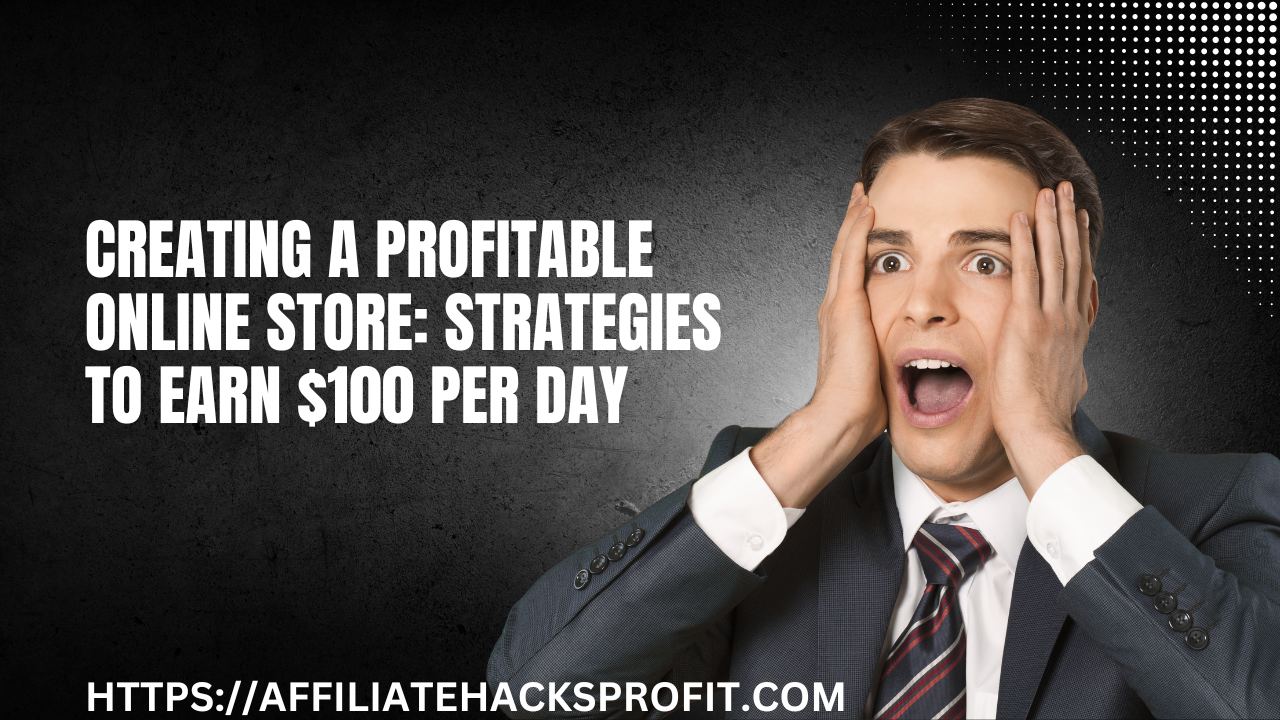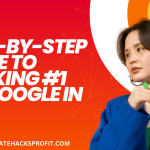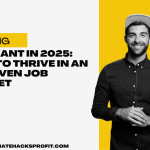In today’s digital age, the idea of making money while sipping coffee in your pajamas sounds like a dream, right? Well, with the rise of e-commerce, it’s no longer just a dream—it’s a reality that many people are cashing in on. But here’s the catch: building an online store that actually makes money (and doesn’t just collect virtual dust) requires more than just a catchy name and a few product listings. If you’re aiming to earn a consistent $100 per day, you’ve got to put in the work and, more importantly, the right strategies.
But don’t worry, we’re not talking about rocket science here. Whether you’re a seasoned entrepreneur or a newbie who’s still figuring out what SEO stands for, this guide is here to walk you through the process. From picking the perfect niche (no, selling your old Beanie Babies doesn’t count) to mastering the art of conversion rate optimization, we’ve got all the tips and tricks you need to turn your online store into a money-making machine. So, grab that coffee, and let’s get started!
Steve is Making $20K+ monthly – Discover the EXACT SAME Secrets to Make $5,000-$10,000 Monthly >>>
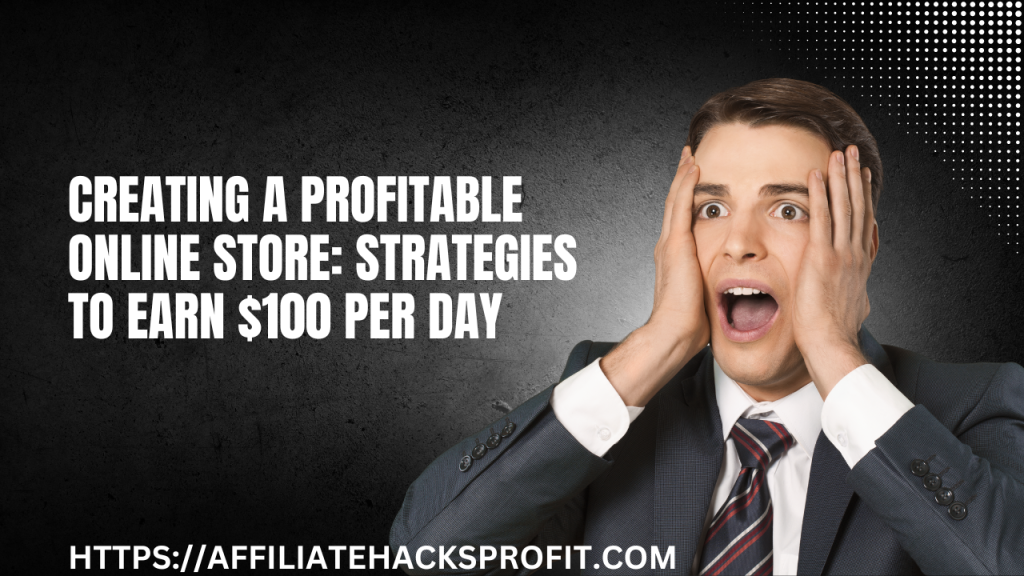
Selecting the Right Niche
Choosing the right niche for your online store is a bit like finding the perfect avocado at the grocery store—you need to strike a balance between ripe and overripe. Dive too deep into an oversaturated market, and you’ll find yourself swimming with fierce competition. But go too niche, and you might end up with a customer base as sparse as a desert oasis.
So how do you find that sweet spot? Start by conducting some thorough market research. No, this doesn’t mean stalking your neighbors to see what they’re buying (though it might be entertaining). Use tools like Google Trends and Keyword Planner to identify what people are searching for. Look for products with a growing demand but relatively low competition. Think of it as a treasure hunt where X marks the spot for profitability.
Next, evaluate your potential niche with a critical eye. Consider your passion and expertise—selling products you’re genuinely interested in can make the process less of a chore and more of a fun adventure. Plus, your enthusiasm will shine through in your product descriptions and marketing, making you more appealing to customers.
Don’t forget to keep an eye on the competition. If every store out there is selling similar products with a million variations, you might need to carve out your unique selling proposition (USP) to stand out. This could be anything from offering superior quality, exceptional customer service, or a quirky twist that makes your store memorable.
In essence, selecting the right niche is like dating—find the one that fits your interests and has potential for a successful, long-term relationship. And remember, a little research and a lot of passion can turn your niche from a mere idea into a profitable venture.
Building a User-Friendly and Attractive Website
Building an online store that stands out isn’t just about slapping a logo on a page and hoping for the best. It’s about crafting a digital shopping experience that’s as enjoyable as a weekend brunch and as smooth as a well-aged wine. Think of your website as your store’s virtual storefront—if it’s messy or confusing, customers might just walk right past it (or click away) and never return.
First things first: design matters. Your website should be visually appealing, but not like a neon-colored explosion. Aim for a clean, modern design that reflects your brand’s personality without overwhelming visitors. Use high-quality images that showcase your products in their best light—think of them as the glamorous models of your e-commerce runway. And keep your color scheme and fonts consistent to create a cohesive look that’s easy on the eyes.
Navigation is another crucial factor. If your customers need a map and a compass to find what they’re looking for, you’ve done something wrong. Make sure your website’s layout is intuitive, with a clear menu and easily accessible categories. Your visitors should be able to find products, read reviews, and check out without feeling like they’re on a wild goose chase.
Mobile optimization is also a must. In today’s world, if your site doesn’t look good on a smartphone or tablet, you’re missing out on a huge chunk of potential sales. Ensure that your site is responsive and adapts seamlessly to different screen sizes. After all, no one wants to scroll endlessly or squint at a tiny text while shopping on their phone.
And let’s not forget about the checkout process—this should be as smooth as a well-oiled machine. An overly complicated or lengthy checkout can turn a ready-to-buy customer into a frustrated quitter. Offer multiple payment options, and make sure the process is straightforward and secure. A streamlined checkout can make the difference between a completed sale and an abandoned cart.
In summary, building a user-friendly and attractive website is about creating an enjoyable shopping experience that keeps customers coming back. With a bit of design flair, intuitive navigation, mobile optimization, and a smooth checkout process, you’ll have a website that not only looks great but also converts visitors into loyal customers. So, roll up your sleeves and get ready to build a virtual store that’s both beautiful and functional!
Driving Targeted Traffic to Your Store
So, you’ve got a shiny new online store up and running, and it looks like it’s ready to take the e-commerce world by storm. But there’s one little hiccup: where’s all the traffic? Without visitors, even the most spectacular store can feel like a ghost town. Driving targeted traffic to your store is like hosting a great party and making sure the right guests show up—because what’s a party without a good crowd?
First up, let’s talk SEO (Search Engine Optimization). Think of SEO as your store’s personal hype person, making sure you’re front and center when potential customers search for products like yours. Optimize your product descriptions with relevant keywords, so when someone types “best organic skincare” into Google, your store is right there waving. Remember to include meta descriptions and alt text for images—these little details help search engines understand what your site is all about.
Steve is Making $20K+ monthly – Discover the EXACT SAME Secrets to Make $5,000-$10,000 Monthly >>>
Next, dive into social media marketing. Platforms like Instagram, Facebook, and Pinterest aren’t just for cat memes—they’re powerful tools for driving traffic to your store. Create engaging posts that highlight your products, share customer testimonials, and run promotions. Use targeted ads to reach specific demographics, so you’re not just casting a wide net but rather inviting the right guests to your digital party. And don’t forget to use hashtags strategically to expand your reach.
Content marketing is another fantastic way to attract visitors. Start a blog related to your niche, offering valuable insights, tips, and information that your target audience will find useful. For instance, if you sell fitness gear, you might write about workout tips or nutrition advice. This not only helps in driving organic traffic but also positions you as an authority in your field. Plus, who doesn’t love a good read while browsing for products?
Email marketing is like sending out VIP invitations to your best customers. Build an email list and send regular newsletters featuring updates, promotions, and exclusive offers. Personalized emails can make your customers feel special and encourage them to visit your store more frequently. Just be careful not to bombard them with too many emails—no one likes an overzealous party host.
Finally, consider leveraging partnerships and collaborations. Team up with influencers or other businesses that complement your products. They can help introduce your store to their followers, driving targeted traffic straight to your virtual doors. It’s a win-win: they get content and you get new customers.
In essence, driving targeted traffic to your store is about combining SEO, social media, content marketing, email campaigns, and strategic partnerships to create a steady stream of visitors who are genuinely interested in what you have to offer. So, put on your marketing hat, roll up your sleeves, and get ready to make some noise—your online store deserves all the traffic it can get!
Conversion Rate Optimization (CRO) Techniques
Now that you’ve successfully lured visitors to your online store, it’s time to work your magic and turn those curious clicks into actual cash. This is where Conversion Rate Optimization (CRO) comes into play. Think of CRO as your store’s personal trainer, working tirelessly to get those conversions in shape and ready to perform. It’s all about turning those casual browsers into enthusiastic buyers with just a few tweaks and techniques.
First things first: let’s talk about your product pages. Imagine if your product descriptions were like an enthusiastic salesperson—smooth, informative, and persuasive. That’s what you need to aim for! Craft clear, compelling product descriptions that highlight benefits, not just features. Use bullet points for easy scanning, and don’t skimp on the high-quality images. Customers want to see what they’re buying, so make sure your photos are crisp and showcase your products from multiple angles. And if you can, add some customer reviews. Real-life testimonials can be the magic ingredient that sways a hesitant shopper.
Next up, let’s tackle the call-to-action (CTA) buttons. These little guys are like the bouncers at your store’s entrance—make sure they’re doing their job right! Your CTA buttons should be prominent, easy to find, and action-oriented. Instead of a bland “Submit,” go for something more engaging like “Get My Free Trial” or “Add to Cart Now.” And remember, a well-placed CTA can be the difference between a completed sale and an abandoned cart.
Speaking of abandoned carts, let’s not forget about cart abandonment strategies. If a customer fills up their cart and then disappears, don’t throw in the towel just yet. Implement a cart abandonment email series to gently remind them of their abandoned goodies. Offer a little nudge, like a discount or free shipping, to entice them back. It’s like sending a friendly reminder that their shopping spree isn’t quite over yet.
Steve is Making $20K+ monthly – Discover the EXACT SAME Secrets to Make $5,000-$10,000 Monthly >>>
A/B testing is your best friend when it comes to CRO. It’s like trying out different outfits to see which one makes you look the best. Test different versions of your product pages, CTA buttons, or checkout processes to see what performs best. It’s all about finding out what resonates with your audience and optimizing accordingly. Don’t be afraid to experiment—sometimes, the smallest changes can lead to significant boosts in conversion rates.
Finally, keep an eye on your website’s loading speed. If your site takes forever to load, customers might not stick around long enough to make a purchase. Optimize images, reduce unnecessary plugins, and use a reliable hosting service to ensure your site runs smoothly. A fast, efficient website is like a well-oiled machine—quick and ready to deliver.
In summary, Conversion Rate Optimization is all about fine-tuning your store to turn more visitors into happy customers. With persuasive product pages, engaging CTAs, strategic cart abandonment emails, A/B testing, and a speedy website, you’ll be well on your way to boosting those conversion rates and watching your sales soar. So, roll up your sleeves, get into optimization mode, and make those conversions happen!
Implementing Effective Pricing and Upselling Strategies
Ah, pricing and upselling—the dynamic duo that can transform your online store from “just okay” to “cha-ching!” If you’ve ever wondered how to price your products in a way that attracts buyers without leaving money on the table, or how to get your customers to indulge in a little extra spending, you’re in the right place. Let’s dive into the art of pricing and upselling with strategies that make your store irresistible.
First up: pricing. Finding the sweet spot between affordability and profitability can be like balancing on a tightrope. You want your prices to be competitive, but also high enough to cover costs and make a profit. Start by researching your competitors to see what they’re charging. This isn’t about copying their prices but understanding the market range. Then, consider your costs, including production, shipping, and overhead. Set your prices to cover these costs and ensure you’re still making a decent margin.
Consider using pricing strategies like tiered pricing or psychological pricing. For instance, pricing a product at $29.99 instead of $30 can make it seem like a better deal—those little details matter! You might also implement tiered pricing where customers pay more for premium features or larger quantities. It’s like giving them a choice between a regular coffee and a fancy latte—some will opt for the upgrade.
Now, let’s talk upselling. This is where the magic happens. Upselling is like offering a customer a little something extra to make their purchase even better. For example, if someone buys a camera, why not suggest a lens or a carrying case? Make sure your upsells are relevant and add value. Nobody wants to be sold a boat when they’re just looking for a paddle.
Use bundle deals to encourage customers to buy more. Create attractive packages that offer a discount when purchasing multiple items together. It’s like offering a “buy one, get one free” deal, but with a twist. For instance, if you sell skincare products, bundle a cleanser with a moisturizer at a reduced price. This not only increases the average order value but also provides customers with a complete solution.
Scarcity and urgency are powerful tools in upselling. Highlight limited-time offers or low stock levels to create a sense of urgency. Phrases like “Only 3 left in stock!” or “Sale ends in 24 hours!” can nudge customers to make a purchase decision faster. Just be honest—no one likes a false sense of urgency.
Lastly, don’t forget to personalize your upselling efforts. Use data and customer behavior insights to tailor your recommendations. If a customer frequently buys fitness gear, suggest related products or exclusive offers based on their past purchases. Personalized recommendations make customers feel understood and valued, which can lead to more sales.
In summary, implementing effective pricing and upselling strategies is about finding the right balance and making your products irresistible. By setting competitive prices, using psychological pricing techniques, offering relevant upsells, bundling deals, creating urgency, and personalizing recommendations, you’ll boost your sales and keep your customers coming back for more. So, put on your pricing hat and upselling cape, and get ready to watch your revenue climb!
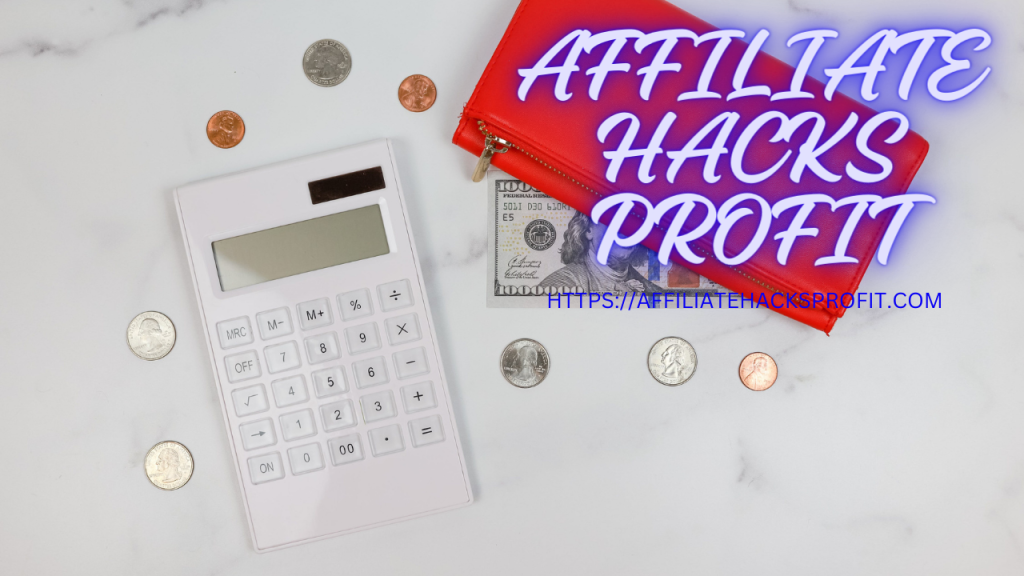
Conclusion
And there you have it! You’ve just navigated the exciting world of creating a profitable online store, from picking the perfect niche to mastering conversion rate optimization. By now, you should have a solid toolkit of strategies ready to transform your online shop from a humble start-up to a revenue-generating powerhouse.
Remember, building a successful online store isn’t a sprint; it’s more like a marathon with a few hurdles along the way. It takes time, effort, and a bit of elbow grease to get everything running smoothly. But with the right strategies in place—like selecting a niche that speaks to your passions, crafting a user-friendly and attractive website, driving targeted traffic, optimizing your conversions, and implementing smart pricing and upselling techniques—you’re well on your way to earning that sweet $100 per day (or more)!
So, roll up those sleeves, get ready to dive into the nitty-gritty details, and put your newfound knowledge into action. Think of your online store as a living, breathing entity that grows and evolves with your dedication. Keep refining your approach, stay adaptable, and don’t be afraid to experiment—sometimes the best results come from trying something new.
Steve is Making $20K+ monthly – Discover the EXACT SAME Secrets to Make $5,000-$10,000 Monthly >>>
In the end, creating a profitable online store is a journey filled with opportunities, challenges, and, of course, plenty of potential for success. So, grab your virtual toolkit, fire up your entrepreneurial spirit, and get ready to turn your online store into a money-making marvel. Here’s to your future e-commerce triumphs and the many happy customers you’ll make along the way!
